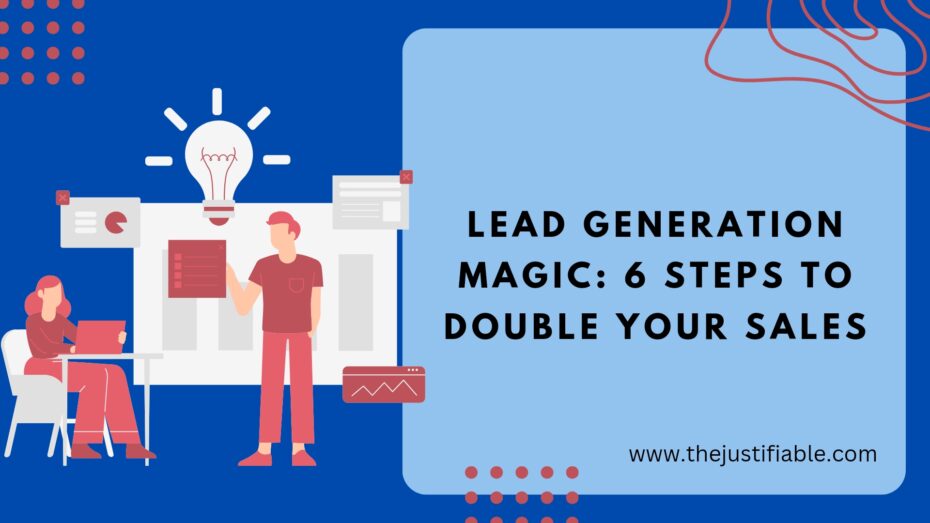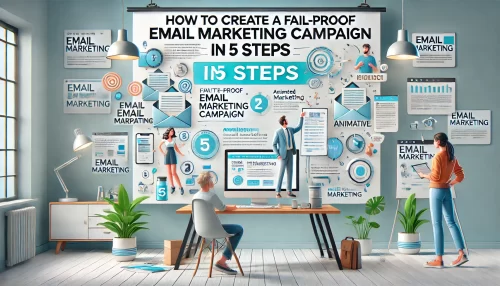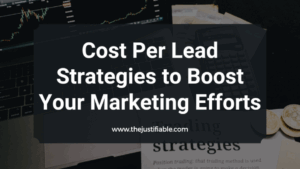Lead generation is the lifeline that fuels your business’s growth engine, but how do you tap into this magic to double your sales? Are you leveraging the latest strategies to connect with your audience effectively? Can your current approach adapt to the evolving digital landscape?
In the world of marketing, capturing the interest of potential customers is both an art and a science. This guide is designed to demystify the process, presenting you with a roadmap to transform prospects into loyal customers.
As we delve deeper into the nuances of lead generation, remember that each strategy you implement should be tailored to your unique business goals and target audience. Let’s embark on this journey to unlock the full potential of your sales funnel and witness a significant transformation in your sales figures.
Why Lead Generation is Your Golden Ticket in 2024
Lead generation stands as the cornerstone of successful marketing strategies. But why is it considered your golden ticket to unprecedented sales growth? The answer lies in the ever-increasing digital footprint of consumers and the competitive landscape of the business world. As companies vie for attention in crowded markets, the ability to attract and engage potential customers becomes critical.
Lead generation is not just about attracting any customer; it’s about attracting the right customer. This precision targeting is what makes lead generation a golden ticket. It enables businesses to focus their resources on prospects most likely to convert, ensuring a higher return on investment. In an era where every dollar counts, optimizing your marketing spend is not just smart; it’s necessary.
Moreover, lead generation strategies have evolved to become more sophisticated and personalized. With advancements in technology and data analytics, businesses can now understand their audience like never before. This deep insight allows for tailored marketing efforts that resonate on a personal level, making each prospect feel understood and valued.
The golden ticket of lead generation also opens doors to building lasting relationships with customers. In 2024, it’s not enough to make a sale; the goal is to create brand advocates. By engaging with leads effectively and providing solutions that meet their needs, businesses can turn satisfied customers into vocal supporters. This not only drives repeat business but also attracts new leads through the most powerful marketing tool available: word of mouth.
Understanding Your Sales Funnel: A Prerequisite
Before diving into the tactics of lead generation, it’s crucial to understand your sales funnel. This understanding serves as the foundation upon which successful lead generation strategies are built. A sales funnel outlines the journey a potential customer goes through, from becoming aware of your business to making a purchase. But why is this understanding so important?
Firstly, knowing each stage of your sales funnel allows for targeted marketing efforts. By recognizing the needs and behaviors of prospects at different stages, you can tailor your messaging and tactics to guide them closer to a purchase. This strategic approach ensures that your marketing efforts are focused and effective.
Secondly, a well-defined sales funnel helps in identifying bottlenecks or areas where prospects drop off. This insight is invaluable for optimizing your lead generation strategy. By addressing these issues, you can improve the overall efficiency of your marketing efforts, ensuring that more leads convert into customers.
Additionally, understanding your sales funnel facilitates better alignment between your marketing and sales teams. When both teams are aware of the funnel’s stages and the specific needs at each point, they can work together more effectively to nurture leads and close sales. This collaboration is key to maximizing the impact of your lead generation efforts.
Finally, a deep dive into your sales funnel reveals opportunities for upselling and cross-selling. By engaging existing customers and understanding their journey, you can identify additional products or services that meet their ongoing needs. This not only boosts your sales but also enhances customer satisfaction and loyalty, turning one-time buyers into lifelong fans.
Step 1: Identify Your Ideal Lead with Precision
“Knowing who to sell to is half the battle won.” Identifying your ideal lead with precision is the cornerstone of a successful marketing campaign. It’s not just about casting a wide net and hoping for the best. It’s about targeting the right people, at the right time, with the right message. This step is where the magic begins, and it’s crucial to get it right.
Firstly, understanding your ideal lead means diving deep into the demographics, psychographics, and behaviors that define your most valuable prospects. These are not just any leads; they are the lifeblood of your business. They are the ones who will engage, convert, and ultimately champion your brand. Identifying them requires a blend of intuition and data, a dance between knowing your product deeply and understanding the market’s needs.
Secondly, this process is not static. As markets evolve and consumer behaviors shift, so too should your understanding of your ideal lead. This is where continuous learning and adaptation come into play. Keeping a pulse on market trends, competitor strategies, and customer feedback is essential. It ensures that your lead generation efforts remain relevant and effective, even as the landscape changes.
Moreover, precision in identifying your leads allows for more efficient use of marketing resources. Instead of spreading your efforts too thin, you can concentrate on channels and messages that resonate most with your target audience. This not only improves the quality of your leads but also enhances the return on investment (ROI) of your marketing activities.
Crafting Buyer Personas: A Data-Driven Approach
“Tell me who your customers are, and I will tell you who you are.” Crafting buyer personas is an essential step in understanding and connecting with your ideal leads. This process involves creating detailed profiles of your ideal customers based on data and research. These personas help you tailor your marketing efforts to meet the specific needs, behaviors, and concerns of different segments of your audience.
The creation of buyer personas starts with gathering data. This includes demographic information, online behavior, customer feedback, and purchasing patterns. Surveys, interviews, and analytics tools can provide valuable insights into who your customers are and what they need. This data-driven approach ensures that your personas are grounded in reality, not just assumptions.
Once you have gathered this information, the next step is to analyze and segment it. Look for patterns and commonalities that can help you group your audience into distinct personas. Each persona should represent a significant segment of your audience, with its own set of characteristics, challenges, and goals. This segmentation allows you to personalize your marketing messages and offers, making them more relevant and compelling.
Personalization is key to engaging your audience. By using buyer personas, you can craft messages that speak directly to the concerns and aspirations of each segment. Whether through email marketing, content creation, or social media strategies, personalization based on buyer personas can significantly increase engagement rates and conversions.
It’s important to remember that buyer personas are not set in stone. As your business grows and the market evolves, so too should your personas. Regularly reviewing and updating your personas with new data will ensure that your marketing efforts remain effective and aligned with your audience’s needs. This ongoing process of refinement is what keeps your lead generation strategy sharp and successful.
Top Tools for Market Analysis in 2024
In 2024, the tools we use for market analysis are more advanced and accessible than ever before. These tools are invaluable for identifying your ideal leads and understanding the competitive landscape. With the right tools, you can uncover trends, track competitor strategies, and gain insights into customer behavior. This information is crucial for crafting strategies that are not only effective but also ahead of the curve.
Firstly, analytics platforms like Google Analytics have become more sophisticated, offering deeper insights into user behavior and website performance. These platforms provide real-time data on how users interact with your site, what content they engage with, and where you might be losing their interest. This information is crucial for optimizing your website and content strategy to attract and retain high-quality leads.
Social media listening tools are also essential in 2024. Platforms like Brandwatch and Hootsuite Insights allow businesses to monitor conversations about their brand, competitors, and industry trends. This real-time feedback can inform your content strategy, help you engage with your audience more effectively, and identify emerging trends that could impact your lead generation efforts.
Competitor analysis tools like SEMrush and Ahrefs offer a window into the strategies that your competitors are using to attract leads. By understanding their keyword strategies, backlink profiles, and content marketing efforts, you can identify gaps in your own strategy and opportunities to differentiate your brand. This competitive intelligence can be a gamechanger in crowded markets.
Lastly, customer relationship management (CRM) systems have evolved to offer more than just a way to manage customer interactions. Modern CRMs are integrated with marketing automation, analytics, and AI capabilities, providing a 360-degree view of your lead generation efforts. Tools like Salesforce and HubSpot not only help you manage leads more effectively but also offer insights into the customer journey, helping you tailor your marketing efforts for maximum impact.
Step 2: Optimize Your Website for Conversion
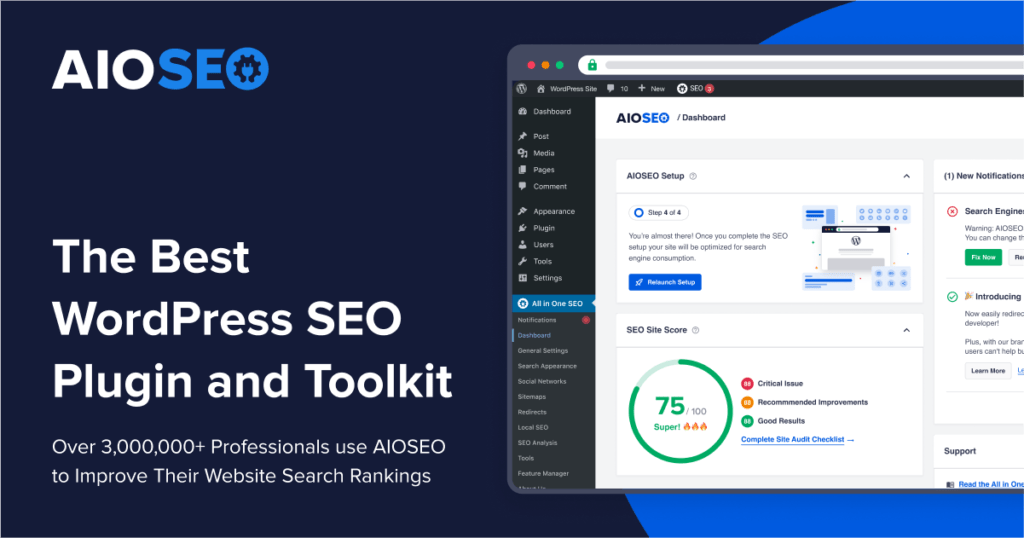
Did you know that the average website conversion rate is only about 2.35%, but the top 25% are converting at 5.31% or higher? This stark difference highlights the immense potential that lies in optimizing your website for conversion.
In the vast ocean of digital marketing, your website is your island of opportunity. It’s where lead generation efforts come to fruition, and where visitors transform into leads, and eventually, customers. To capitalize on this potential, your website must be meticulously crafted to guide visitors down the conversion funnel effectively.
Firstly, optimizing your website for conversion starts with understanding user behavior. Utilizing tools like heatmaps and analytics can reveal how users interact with your site, what attracts their attention, and where they drop off. This insight allows you to make data-driven decisions to improve user experience (UX) and remove any friction points that might prevent conversion. Remember, a website optimized for user experience is a website optimized for conversion.
Moreover, the content on your website plays a pivotal role in conversion optimization. Each page should clearly communicate your value proposition, with compelling calls-to-action (CTAs) that guide users towards taking the next step. Whether it’s signing up for a newsletter, downloading a whitepaper, or making a purchase, your CTAs should be clear, enticing, and strategically placed to catch the user’s eye at the right moment.
Another crucial aspect of website optimization is mobile responsiveness. With over half of all web traffic coming from mobile devices, your website must offer a seamless experience across all platforms. This not only improves user satisfaction but also positively impacts your search engine rankings, as mobile-friendliness is a key ranking factor. A responsive design ensures that your lead generation efforts reach their full potential by catering to the vast mobile audience.
Lastly, website speed cannot be overlooked. A delay of even a second in page response can result in a 7% reduction in conversions. In the digital age, speed is of the essence. Optimizing your website’s load time through image compression, minimizing CSS and JavaScript, and leveraging browser caching can significantly enhance site performance. Remember, a fast website is a friendly website, inviting visitors to stay, explore, and eventually convert.
5 Key Elements of a Lead-Generating Website
Creating a website that effectively generates leads is an art and a science. It requires a strategic blend of design, content, and functionality. At the heart of a successful lead-generating website are five key elements: compelling content, intuitive design, strong CTAs, optimized forms, and trust signals. Each of these components plays a vital role in attracting and converting visitors into leads.
Compelling content is the cornerstone of any effective website. It engages readers, provides value, and positions your brand as an authority in your field. This content should be tailored to your target audience, addressing their needs, challenges, and interests. By doing so, you create a connection that not only draws them in but also encourages them to explore further.
An intuitive design ensures that visitors can easily navigate your site and find the information they’re looking for. A user-friendly interface, clear navigation, and a clean layout are essential. The goal is to provide a seamless experience that guides visitors naturally from one step to the next, culminating in a conversion action.
Strong CTAs are the signposts that guide users towards conversion. They should be bold, clear, and compelling, encouraging users to take the next step, whether it’s subscribing to a newsletter, downloading a guide, or contacting your sales team. The placement of these CTAs is just as important as their message, ensuring maximum visibility and impact.
Optimized forms are crucial for capturing lead information. They should be simple, concise, and easy to complete. By minimizing the number of fields and clearly explaining the value of what the visitor will receive in return, you can increase form submissions and, consequently, lead generation.
Finally, trust signals such as testimonials, reviews, certifications, and secure payment badges play a significant role in converting visitors into leads. They provide social proof and assurance, building confidence in your brand and offering. Incorporating these elements into your website can significantly enhance its effectiveness in generating leads.
The Power of Testimonials and Reviews
The opinions of others have a profound impact on our decision-making processes. Testimonials and reviews are powerful tools that can significantly boost your website’s conversion rates. They serve as social proof, offering potential customers a glimpse into the experiences of others, and providing reassurance that they are making the right choice.
Testimonials from satisfied customers add a personal touch to your website, making your brand more relatable and trustworthy. They should highlight specific benefits of your product or service, addressing potential concerns of prospective customers. Featuring these testimonials prominently on your website can sway decision-making in your favor.
Reviews, on the other hand, offer a more comprehensive view of customer experiences. They provide transparency and build trust by showcasing a range of opinions, both positive and negative. Managing and responding to reviews, particularly on third-party sites, also demonstrates your commitment to customer satisfaction and continuous improvement.
Incorporating these elements into your website not only enhances its appeal but also significantly influences conversion rates. Prospective customers are more likely to take action when they see that others have had positive experiences with your brand. Thus, testimonials and reviews are not just feedback; they are conversion catalysts.
SEO Strategies That Attract Quality Leads
Attracting quality leads begins with visibility, and in the digital marketplace, visibility is driven by search engine optimization (SEO). SEO strategies that are tailored to your target audience can significantly increase your website’s traffic and, more importantly, ensure that this traffic is relevant to your business. It’s about attracting visitors who are actively seeking solutions that you provide.
Keyword research is the foundation of any effective SEO strategy. Identifying the terms and phrases that your ideal customers are using to search for products or services like yours allows you to tailor your content to meet their needs. This relevance is key to attracting high-quality leads who are more likely to convert.
On-page optimization, including meta tags, headings, and content, ensures that search engines understand the relevance and value of your pages. By aligning your on-page elements with your target keywords, you enhance your visibility in search results, drawing in a targeted audience.
Link building and content marketing are also crucial components of SEO. High-quality, authoritative links to your site signal to search engines that your content is valuable and trustworthy. Similarly, creating valuable content that addresses the needs and questions of your target audience not only attracts links but also positions your brand as an authority.
Lastly, local SEO is essential for businesses looking to attract leads in specific geographic areas. Optimizing your website for local search queries, along with maintaining accurate and consistent local listings, can drive targeted traffic to your site and physical locations.
Step 3: Leverage Social Media to Engage Potential Leads
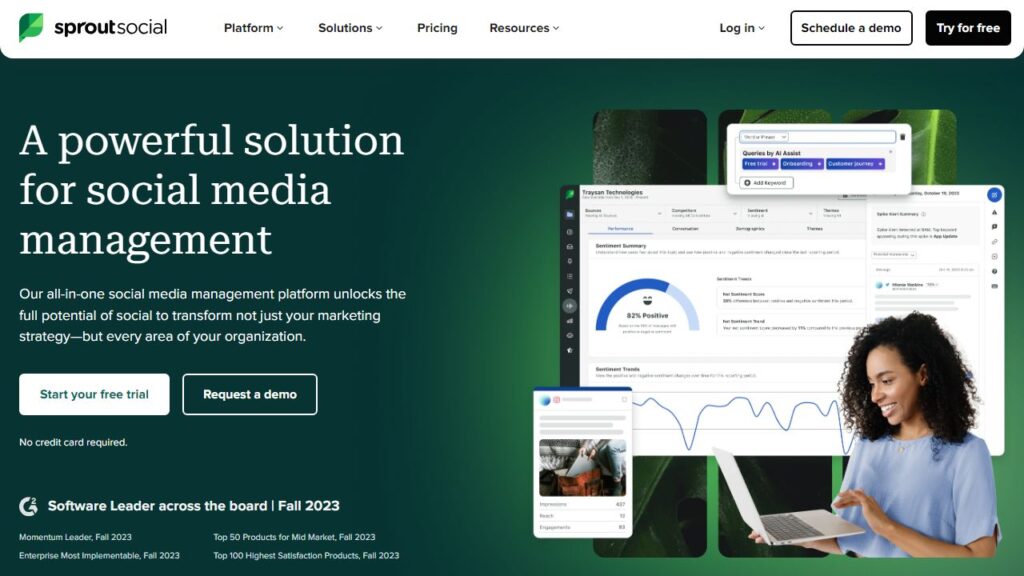
Just as a fisherman chooses a lure with care to attract the fish he wants to catch, so too must businesses select their platforms and content to engage potential leads on social media. The vast sea of social media offers various environments, each with its unique audience and culture.
Navigating these waters requires a keen understanding of where your potential leads are most active and what type of content will lure them towards your brand. In the digital age, leveraging social media is not just an option; it’s a necessity for engaging potential leads and nurturing them into loyal customers.
The first step is identifying which social media platforms your target audience frequents. Each platform has its own demographic tendencies, usage patterns, and content formats. For instance, LinkedIn is a powerhouse for B2B lead generation, whereas Instagram and TikTok offer tremendous potential for B2C brands targeting a younger demographic. Understanding these nuances allows you to tailor your social media strategy to engage with your ideal leads effectively.
Once you’ve identified the right platforms, the focus shifts to creating and sharing content that resonates with your audience. This content should not only attract attention but also encourage interaction and sharing. High-quality, relevant content positions your brand as a thought leader and builds trust with your audience. Whether it’s informative blog posts, engaging videos, or compelling infographics, your content should provide value and provoke thought or action.
Engagement is the heart of social media. Responding to comments, participating in conversations, and creating interactive content such as polls and quizzes can foster a sense of community and belonging among your audience. This active engagement not only enhances brand visibility but also strengthens relationships with potential leads, making them more likely to convert into customers.
Finally, leveraging social media analytics tools is crucial for refining your strategy. These tools provide insights into which content performs best, the demographics of your engaging audience, and the overall reach of your posts. By analyzing this data, you can continuously optimize your social media strategy to better engage potential leads, ensuring your efforts are both effective and efficient.
3 High-Impact Platforms for Lead Generation in 2024
In 2024, the digital landscape continues to evolve, with certain social media platforms standing out as high-impact arenas for lead generation. Identifying and focusing on these platforms can significantly enhance your brand’s ability to connect with and convert potential leads. Each platform offers unique features and audiences, making them valuable tools in your digital marketing arsenal.
Firstly, LinkedIn remains the undisputed leader for B2B lead generation. Its professional environment and networking capabilities make it an ideal platform for connecting with industry professionals, sharing thought leadership content, and driving targeted leads through sponsored content and InMail campaigns. For businesses looking to engage with other businesses or professionals, LinkedIn’s precision targeting and professional context are unmatched.
Instagram, with its visually driven content and high user engagement rates, is a powerhouse for B2C brands. The platform’s features, such as Stories, Reels, and IGTV, offer diverse ways to present content that can captivate and engage potential customers. Coupled with Instagram’s sophisticated targeting options, brands can reach their ideal audience with ease, making it a crucial platform for visual storytelling and brand building.
TikTok has emerged as a game-changer for brands targeting Gen Z and younger Millennials. Its short-form video content and viral trends create unique opportunities for brands to showcase their creativity and connect with audiences in a fun and authentic way. TikTok’s algorithm favors content engagement, making it possible for even small brands to achieve significant visibility and engagement.
Each of these platforms requires a tailored approach to content creation and audience engagement. By focusing on the platforms where your target audience is most active and receptive, you can maximize your lead generation efforts and build meaningful connections with potential customers.
Crafting Captivating Content that Converts
Content is king. But not just any content—captivating content that resonates with your audience and compels them to take action. Crafting such content requires a deep understanding of your audience’s interests, pain points, and desires. It’s about telling stories that connect on an emotional level, providing value that educates or entertains, and creating experiences that leave a lasting impression.
The first step in crafting captivating content is to listen to your audience. Social listening tools can provide insights into the conversations, trends, and questions that matter most to your potential leads. This understanding allows you to create content that speaks directly to their needs and interests, increasing the likelihood of engagement and conversion.
Visual elements play a critical role in making content captivating. In a world where attention spans are short, visually appealing content can make your message stand out. High-quality images, engaging videos, and eye-catching graphics can enhance your content’s appeal, making it more likely to be noticed, remembered, and shared.
The language and tone of your content also matter. Your content should reflect your brand’s personality and speak to your audience in a way that feels natural and authentic. A conversational tone, infused with humor or emotion where appropriate, can make your content more relatable and engaging. It’s about finding the right balance between professionalism and personality.
Finally, every piece of content should have a clear call to action (CTA). Whether it’s encouraging comments, sharing, signing up for a newsletter, or visiting your website, your CTA should be clear, compelling, and relevant to the content. A well-crafted CTA can be the tipping point that converts an engaged audience member into a lead or customer.
Step 4: Implement an Email Marketing Strategy That Works
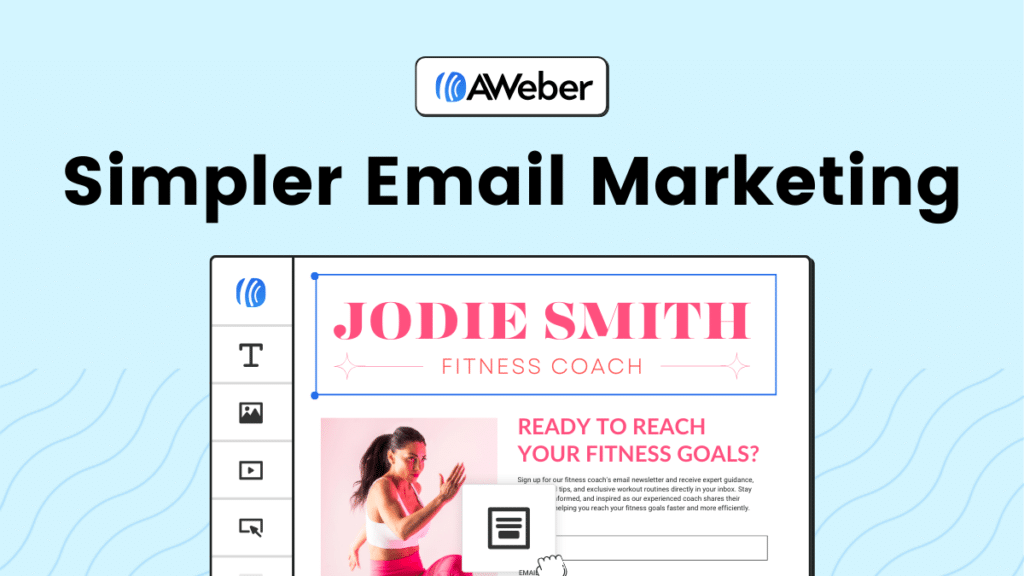
Believe it or not, for every $1 spent on email marketing, the average return is a staggering $42. In a digital age where new platforms and technologies emerge at a dizzying pace, email marketing remains a cornerstone of effective digital marketing strategies.
This resilient tool not only survives but thrives by offering unparalleled opportunities for personalized communication and direct engagement with potential leads. Implementing an email marketing strategy that works requires a blend of creativity, personalization, and strategic analysis to capture and maintain your audience’s interest.
Firstly, the success of an email marketing strategy hinges on the ability to craft compelling content that speaks directly to the recipient’s needs and interests. This means going beyond generic messages to create personalized emails that resonate with your audience. Segmenting your email list based on user behavior, interests, or demographic information can significantly increase the relevance and effectiveness of your campaigns, leading to higher open rates and engagement.
Secondly, the design and presentation of your emails play a crucial role in capturing attention and encouraging action. In a world flooded with information, your emails need to stand out. Utilizing a responsive design ensures your emails look great on any device, while clear calls-to-action guide recipients toward the next step, whether it’s visiting your website, taking advantage of a special offer, or engaging with your content.
Timing and frequency also play a critical role in the success of your email marketing efforts. Bombarding your audience with too many emails can lead to unsubscribes, while infrequent communication can cause them to forget about your brand. Finding the right balance is key, as is choosing the optimal times to send emails when your audience is most likely to engage.
Finally, A/B testing different elements of your emails, from subject lines to content formats, can provide valuable insights into what resonates best with your audience. This continuous process of testing, learning, and optimizing is essential for refining your email marketing strategy and achieving better results over time. By focusing on personalization, design, timing, and optimization, you can implement an email marketing strategy that not only works but also significantly contributes to your overall lead generation efforts.
Building a List: Quality Over Quantity
In the world of email marketing, having a massive list isn’t the be-all and end-all. What really matters is the quality of your list. A smaller, more engaged audience can be far more valuable than a large list of disinterested subscribers. This focus on quality over quantity ensures that your email marketing efforts are directed toward individuals who are genuinely interested in your brand and more likely to convert into customers.
The first step in building a quality list is to attract subscribers through valuable offerings. Whether it’s exclusive content, a compelling ebook, or access to special deals, these incentives should be relevant and appealing to your target audience. This not only encourages sign-ups but also sets the stage for a relationship based on value and trust.
Secondly, transparency and consent are critical. Make sure your subscribers know what they’re signing up for and how often they’ll be hearing from you. This honesty not only complies with email marketing laws but also builds trust with your audience. Using double opt-in methods further ensures that your subscribers are genuinely interested in receiving your emails.
Maintaining the quality of your list requires regular cleaning and updating. Removing inactive subscribers and those who have opted out helps keep your list healthy and your engagement rates high. This process also helps improve the accuracy of your campaign metrics, giving you a clearer understanding of how well your email marketing strategy is performing.
Lastly, engaging with your subscribers through personalized content keeps your list warm and responsive. By consistently providing value and maintaining relevance, you can cultivate a loyal audience that looks forward to your emails. Remember, a quality list is a powerful asset in your email marketing arsenal, one that can drive significant results for your business.
Automated Campaigns: Personalize to Persuade
Automation in email marketing isn’t just a tool for efficiency; it’s a strategy for personalization and engagement. Automated email campaigns allow you to send the right message to the right person at the right time, without the need for constant manual intervention. This level of personalization is key to persuading your audience and guiding them through the customer journey.
By setting up triggered emails based on specific actions or behaviors, such as signing up for your list, making a purchase, or abandoning a cart, you can create a more personalized and relevant experience for your subscribers. These timely, automated messages can significantly boost engagement rates, turning casual browsers into loyal customers.
Personalization goes beyond just including the subscriber’s name in the email. It involves tailoring the content, offers, and recommendations to match the individual’s interests and past interactions with your brand. This level of detail makes your audience feel understood and valued, increasing the likelihood of conversion.
Segmentation plays a crucial role in the effectiveness of automated campaigns. By dividing your list into specific groups based on criteria like demographics, behavior, or purchase history, you can create highly targeted campaigns that resonate with each segment. This targeted approach not only improves engagement but also increases the efficiency of your email marketing efforts.
Moreover, automated campaigns provide valuable data on customer behavior and preferences. By analyzing the performance of these campaigns, you can gain insights into what works best for your audience, allowing you to continuously refine and improve your strategy. In essence, automated email campaigns are a dynamic tool that, when used correctly, can personalize your marketing efforts and persuade your audience more effectively.
The Magic Metrics: Tracking Success in Email Engagement
In the realm of email marketing, data is your compass. Tracking the right metrics is essential for understanding the effectiveness of your campaigns and making informed decisions. Open rates, click-through rates (CTRs), conversion rates, and unsubscribe rates are among the key indicators of your email campaign’s performance. Each of these metrics offers insights into how well your content resonates with your audience and drives them to take action.
Open rates provide a glimpse into how compelling your subject lines are and how well they’re able to grab your audience’s attention. A high open rate suggests that your emails are successfully making it past spam filters and piquing interest. However, it’s what happens after the email is opened that truly matters.
Click-through rates (CTRs) delve deeper, measuring how many people are engaged enough with your content to click on links within your email. This metric is a strong indicator of the relevance and value of your content to your audience. High CTRs are a good sign that your email content is effectively persuading readers to take the next step.
Conversion rates take the analysis a step further by measuring the percentage of recipients who take a specific action, such as making a purchase or signing up for a webinar, as a result of your email. This metric is the ultimate test of your email campaign’s effectiveness in driving measurable business outcomes.
Lastly, unsubscribe rates can offer insights into how well your emails are being received over time. While some attrition is normal, a high unsubscribe rate may indicate that your content is not meeting your audience’s expectations or that you’re emailing too frequently. Monitoring this metric can help you adjust your strategy to better align with your audience’s preferences.
Step 5: Use Data Analytics to Refine Your Strategy
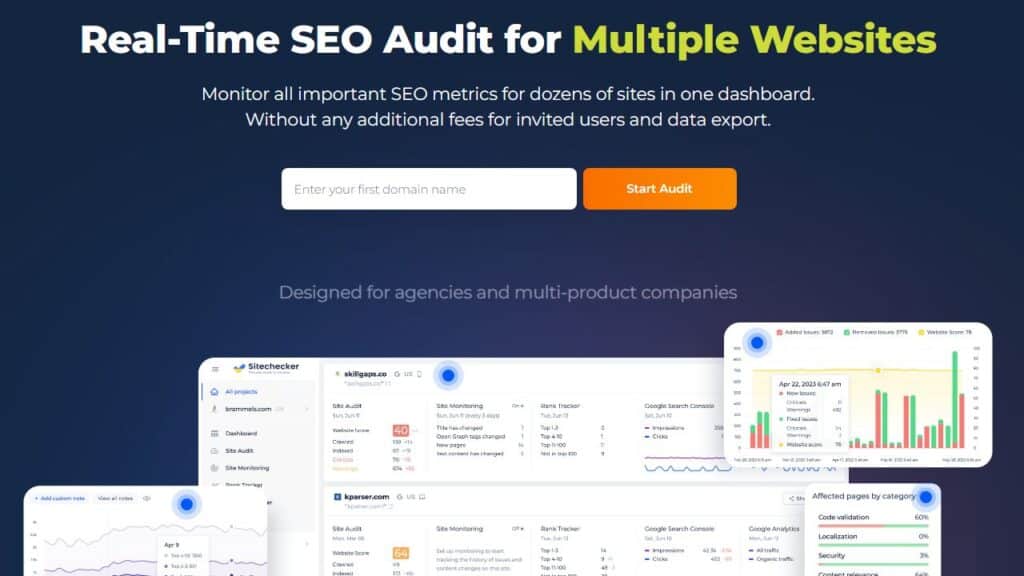
An astonishing 90% of the world’s data has been generated in the last two years alone, showcasing the explosive growth of information available to businesses today. In this sea of data, the ability to sift through and harness relevant insights can dramatically refine and enhance your lead generation strategy.
Data analytics, the process of examining data sets to conclude, is not just a buzzword but a critical component in the optimization of your marketing efforts. It allows businesses to make informed decisions, tailor strategies to specific audience needs, and ultimately drive more efficient and effective lead generation.
The first step in leveraging data analytics is to collect the right data. This involves tracking user interactions across your website, social media platforms, and email campaigns. Tools like Google Analytics, CRM software, and social media analytics platforms can provide a wealth of information about your audience’s behavior, preferences, and engagement patterns.
By understanding what content resonates with your audience, which channels drive the most traffic, and where potential leads drop off, you can make targeted adjustments to your strategy.
Once you’ve collected the data, the next challenge is analysis. This is where many businesses feel overwhelmed by the sheer volume of information available. However, by focusing on key performance indicators (KPIs) that align with your business goals, you can simplify the analysis process. Conversion rates, bounce rates, lead acquisition costs, and customer lifetime value are just a few metrics that can offer valuable insights into the effectiveness of your lead generation efforts.
The insights gained from data analysis should then be used to refine your marketing strategies. This could mean adjusting your content strategy to focus more on the topics that engage your audience, optimizing your landing pages to improve conversion rates, or reallocating your budget to the most effective marketing channels. The goal is to create a more targeted, efficient approach that maximizes the return on your marketing investments.
The Top 5 Analytics Tools for Maximizing Lead Conversion
In the ever-evolving landscape of digital marketing, having the right analytics tools in your arsenal can make the difference between a good strategy and a great one. These tools not only help you understand your audience but also provide actionable insights to enhance your lead conversion efforts. Here are the top 5 analytics tools that are indispensable for marketers looking to maximize their lead conversion rates.
Google Analytics remains the gold standard for website analytics, offering a comprehensive suite of tools to track and analyze website traffic, user behavior, and conversion data. Its versatility and depth of insights make it a must-have for businesses of all sizes. By understanding how users interact with your site, you can identify areas for improvement and optimize the user journey for better conversion rates.
Hotjar offers a different perspective by providing visual insights into user behavior through heatmaps, session recordings, and surveys. These features allow you to see exactly how users interact with your website, highlighting what captures their attention and where they encounter friction. This user-centric data is invaluable for optimizing page layouts, CTAs, and content to improve lead conversion.
HubSpot’s marketing analytics and dashboard tools provide a 360-degree view of your marketing efforts, from website traffic and email marketing performance to social media engagement and CRM data. By integrating data from various channels, HubSpot helps you track the entire customer journey, offering insights on how to nurture leads more effectively and increase conversion rates.
SEMrush is an all-in-one marketing toolkit that includes features for SEO, content marketing, competitor research, and more. Its analytics tools provide insights into your website’s performance in search rankings, helping you understand how organic search contributes to your lead generation efforts. By identifying high-performing keywords and analyzing your competitors’ strategies, you can refine your SEO approach to attract more qualified leads.
Finally, Salesforce Analytics extends beyond traditional marketing metrics to offer a deep dive into customer data and interactions. For businesses using Salesforce as their CRM, its analytics tool provides a powerful way to analyze sales data, monitor lead conversion rates, and identify trends that can inform marketing strategies. By leveraging Salesforce Analytics, businesses can create a more cohesive and data-driven approach to lead generation and conversion.
Interpreting Data to Enhance User Experience
Interpreting data to enhance user experience is not just about analyzing numbers; it’s about understanding the story behind those numbers. Every click, every bounce, and every conversion tells a story about your users’ needs, preferences, and obstacles. By listening to what the data is saying, you can make informed decisions that significantly improve the user experience (UX) on your website, leading to higher engagement, satisfaction, and conversion rates.
Start by identifying patterns in the data. For example, a high bounce rate on a specific page may indicate that users are not finding what they expect or that the page is not user-friendly. Similarly, if a particular call-to-action (CTA) is performing well, it may suggest that users respond positively to its messaging or placement. These insights can guide you in making targeted improvements to your website’s content and design.
User feedback is another crucial piece of the puzzle. Combining quantitative data with qualitative feedback from user surveys, reviews, and feedback forms can provide a more complete picture of the user experience. This holistic approach allows you to address not just the symptoms of user dissatisfaction but the underlying causes.
Experimentation is key to validating your insights and hypotheses. A/B testing allows you to compare different versions of a webpage, CTA, or content piece to see which performs better. This method provides concrete evidence about what changes improve the user experience and lead conversion rates, reducing guesswork and enabling more strategic decision-making.
Finally, enhancing UX is an ongoing process of learning and improvement. The digital landscape and user expectations are constantly evolving, so what works today may not work tomorrow. Regularly reviewing your data, gathering user feedback, and testing new approaches will ensure that your website continues to meet and exceed user needs, driving better engagement and more effective lead conversion over time.
Step 6: Foster Relationships Through Remarketing
“Customers may forget what you said but they’ll never forget how you made them feel.” This timeless adage holds especially true in the digital age, where fostering relationships through remarketing has become a crucial strategy for businesses aiming to nurture leads and convert one-time visitors into loyal customers.
Remarketing isn’t just about reminding; it’s about re-engaging with your audience in a meaningful way, providing them with tailored content and offers that resonate with their individual needs and preferences. This strategic approach not only enhances brand recall but also strengthens customer relationships, ultimately driving sales and loyalty.
The first step in successful remarketing is to segment your audience based on their behavior and interaction with your brand. This segmentation allows you to tailor your messaging and offers to match the specific interests and needs of different groups. For example, you might create one campaign for users who abandoned their shopping carts and another for those who visited your services page but did not make an inquiry. By customizing your approach, you increase the relevance of your messages, which can significantly improve engagement and conversion rates.
Effective remarketing also involves choosing the right channels to reach your audience. Whether it’s through email, social media, or display ads on the Google Display Network, selecting the platforms where your audience is most active ensures that your messages are seen and acted upon. It’s also important to consider the timing and frequency of your remarketing efforts to avoid overwhelming your audience while keeping your brand top-of-mind.
Personalization is key to remarketing success. Beyond just inserting a user’s name in an email, true personalization involves using data to create highly relevant and engaging content that speaks directly to the user’s interests, past behavior, and potential needs. This could mean recommending products similar to those they’ve viewed, offering special deals on items they’ve shown interest in, or providing valuable content that addresses their specific concerns.
The Art of Re-engagement: Turning Browsers into Buyers
Turning browsers into buyers is a delicate art that requires understanding, patience, and strategic finesse. Re-engagement is about reigniting the interest of potential customers who have interacted with your brand but haven’t made a purchase. It’s about reminding them of what caught their eye in the first place and providing them with compelling reasons to take that final step. This process is crucial for converting interest into action, leveraging previous interactions to drive sales and build customer loyalty.
The foundation of successful re-engagement lies in understanding why users didn’t convert during their initial visit. Was it timing, price, lack of information, or simply distraction? Identifying these barriers is the first step toward addressing them in your remarketing campaigns. Tailored messaging that speaks to these concerns can help overcome hesitations, turning doubts into determination.
Providing incentives can also play a significant role in converting browsers into buyers. Exclusive offers, limited-time discounts, and personalized recommendations can all serve as powerful motivators for users to revisit their decision. These incentives should be communicated in a way that feels personalized and exclusive, making the recipient feel valued and understood.
Engagement doesn’t stop at the sale. Post-purchase remarketing is an opportunity to turn new customers into repeat buyers and brand advocates. Thanking customers for their purchase, asking for feedback, and offering after-sale support are all ways to continue the conversation. Additionally, suggesting related products or services based on their purchase history can encourage further engagement and sales.
Remarketing efforts should always be respectful and privacy-conscious. Ensuring that your strategies comply with data protection regulations and providing users with clear options to manage their preferences are essential practices. By respecting your audience’s privacy and preferences, you build trust and credibility, which are the foundations of any lasting customer relationship.
Remarketing Strategies That Double Sales
Remarketing is a powerful tool in the marketer’s arsenal, capable of doubling sales when executed with precision and creativity. The key to remarketing success lies in its ability to remind, persuade, and provide value to potential customers at various stages of their journey. By implementing strategic remarketing campaigns, businesses can capture the attention of users who have already expressed interest in their products or services, dramatically increasing the likelihood of conversion.
One effective strategy is to use dynamic remarketing ads that showcase products or services users have viewed on your website. These ads can follow users across the web, displaying personalized content that reminds them of their interest. This targeted approach ensures that your brand stays top-of-mind, gently nudging users back toward your site to complete their purchase.
Creating segmented email remarketing campaigns is another powerful strategy. By categorizing users based on their actions—such as cart abandonment, product views, or previous purchases—you can send highly personalized emails that address their specific interests and concerns. These emails can include product recommendations, customer testimonials, or special offers, providing a personalized touch that can significantly boost conversion rates.
Leveraging social media for remarketing is also highly effective. Platforms like Facebook and Instagram offer sophisticated targeting options that allow you to reach users who have interacted with your brand. By creating engaging content that resonates with your audience, you can encourage likes, shares, and comments, further amplifying your reach and increasing the chances of conversion.
Conclusion: Your Path to Doubling Sales with Lead Generation
Embarking on the path to doubling your sales with lead generation is like setting sail on a vast ocean of opportunities. The journey is intricate, filled with challenges and discoveries, but most importantly, it is immensely rewarding. By embracing the strategies discussed, from refining your website for conversion to leveraging the power of social media and email marketing, you have the blueprint to transform your lead generation process.
Remember, the essence of this journey lies not just in attracting leads but in cultivating meaningful connections that convert prospects into loyal customers.
The Continuous Journey of Improvement and Growth
Lead generation is not a destination but a continuous journey of improvement and growth. The digital landscape is ever-evolving, with new technologies and customer behaviors emerging regularly. Staying ahead requires an unwavering commitment to learning and adapting. Regularly analyze your data, listen to your audience, and be ready to pivot your strategies in response to new insights and trends. Remember, every interaction with a potential lead is an opportunity to refine your approach and enhance your understanding of what drives conversion and loyalty.
Furthermore, innovation is key to sustaining growth in your lead generation efforts. Experiment with new tools, platforms, and tactics to discover what resonates best with your target audience. Embrace the creative aspects of marketing, from crafting compelling content to designing engaging user experiences. By fostering a culture of innovation within your team, you can uncover unique opportunities to connect with your audience and drive sales.
Building strong relationships with your leads is as important as attracting them in the first place. Engage with your audience consistently, providing value beyond your products or services. Whether through informative content, responsive customer service, or community engagement, show your audience that your brand stands for more than just sales. These relationships are the foundation upon which customer loyalty is built, leading to repeat business and referrals that can significantly impact your bottom line.
Next Steps: Implementing Your Lead Generation Magic
As you stand ready to implement your lead generation magic, start with a clear plan of action. Set specific, measurable goals for what you want to achieve and outline the strategies you will use to get there. Whether it’s increasing website traffic, boosting conversion rates, or enhancing customer engagement on social media, having clear objectives will focus your efforts and help you measure success.
Next, prioritize the integration of your lead generation strategies across all marketing channels. Consistency in messaging, branding, and customer experience is crucial for building trust and recognition. Ensure that your team is aligned on your goals and strategies, fostering collaboration across departments to maximize the impact of your lead generation efforts.
Invest in the tools and technologies that will empower your strategies. From CRM systems to analytics platforms, having the right tools at your disposal can streamline your processes, provide valuable insights, and enhance your ability to connect with your audience. Consider the resources you need to implement your strategies effectively and make informed decisions about where to invest.
Finally, remember that patience and persistence are your allies. Doubling your sales through lead generation is an ambitious goal that requires time, effort, and continuous optimization. Celebrate your successes, learn from your challenges, and stay committed to the journey. With determination and a strategic approach, you can unlock the full potential of your lead generation efforts and achieve remarkable growth for your business.
Frequently Asked Questions (FAQ)
What is lead generation and why is it important for my business?
Lead generation is the process of attracting and converting prospects into potential customers for your business. It’s crucial because it helps you find new customers, build relationships, and ultimately increase sales. Effective lead generation ensures you’re reaching the right audience and optimizing your resources for the best return on investment.
How can I double my sales through lead generation?
To double your sales through lead generation, you need to implement a strategic approach that includes understanding your ideal customer, optimizing your website for conversions, leveraging social media, using email marketing effectively, remarketing to potential leads, and continuously refining your strategy with data analytics.
What are some effective lead generation techniques for 2024?
Effective lead generation techniques for 2024 include creating high-quality content, utilizing social media platforms for engagement, optimizing your website for conversions, using email marketing to nurture leads, employing remarketing strategies, and using data analytics to fine-tune your approach.
How do I optimize my website for lead generation?
Optimizing your website for lead generation involves ensuring your site is user-friendly, fast, and mobile-responsive. You should have clear calls-to-action (CTAs), engaging content, easy navigation, and optimized forms for capturing lead information. Additionally, using trust signals like testimonials and reviews can increase conversions.
What role does social media play in generating leads?
Social media plays a significant role in generating leads by allowing businesses to connect with their audience, build brand awareness, and engage with potential customers. Platforms like LinkedIn, Instagram, and TikTok offer unique opportunities for different types of businesses to reach their target audience and drive traffic to their websites.
What is email marketing, and how can it help with lead generation?
Email marketing is a direct form of communication that allows businesses to reach out to potential and existing customers through personalized emails. It helps with lead generation by nurturing relationships, providing valuable content, and guiding leads through the sales funnel, ultimately increasing conversions and sales.
How can I create an effective email marketing strategy?
An effective email marketing strategy involves segmenting your email list based on user behavior and demographics, crafting personalized and relevant content, designing responsive emails, testing different elements for optimization, and using automation to send timely messages that resonate with your audience.
What is remarketing, and why is it important for lead conversion?
Remarketing is a strategy that targets individuals who have previously interacted with your brand but did not convert. It is important for lead conversion because it keeps your brand top-of-mind, re-engages potential customers with personalized messages, and encourages them to complete their purchase or desired action.
How can I use data analytics to improve my lead generation efforts?
Data analytics can improve lead generation efforts by providing insights into user behavior, identifying which marketing strategies are working, and highlighting areas for improvement. By analyzing key performance indicators (KPIs) like conversion rates, bounce rates, and lead acquisition costs, businesses can make data-driven decisions to enhance their strategies.
What are some best practices for creating high-converting landing pages?
Best practices for creating high-converting landing pages include having a clear and compelling headline, using strong CTAs, providing valuable content, using trust signals like testimonials, optimizing the page for mobile devices, and ensuring fast loading times to improve user experience and increase conversions.
How do I identify my ideal customer for better lead targeting?
Identifying your ideal customer involves researching demographics, psychographics, and behaviors to understand who is most likely to benefit from your product or service. Creating detailed buyer personas based on this information helps you tailor your marketing efforts to attract and engage the right audience effectively.
What tools can help with lead generation and tracking?
Tools that can help with lead generation and tracking include Google Analytics for website insights, CRM systems like Monday or HubSpot for managing customer relationships, social media analytics tools like Hootsuite, and email marketing platforms like Mailmunch for campaign management and automation.
What is the difference between lead generation and lead conversion?
Lead generation is the process of attracting and capturing potential customers’ interest in your product or service. Lead conversion, on the other hand, is the process of turning those leads into paying customers. While lead generation focuses on bringing in prospects, lead conversion is about persuading them to make a purchase.
How can I use customer testimonials to boost my lead generation efforts?
Customer testimonials can boost lead generation efforts by serving as social proof that builds trust and credibility. Displaying positive feedback from satisfied customers on your website or marketing materials can reassure potential leads about the quality of your product or service, encouraging them to take action.
What are some common mistakes to avoid in lead generation?
Common mistakes to avoid in lead generation include not having a clear strategy, neglecting to understand your target audience, failing to optimize your website for conversions, ignoring the importance of follow-up, over-relying on a single channel, and not using data analytics to measure and improve performance.


